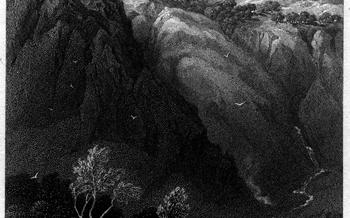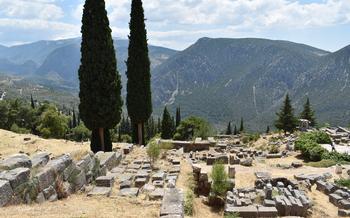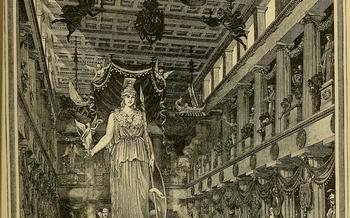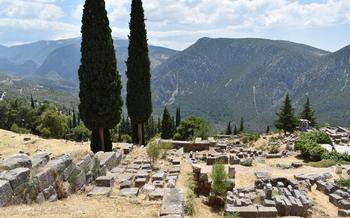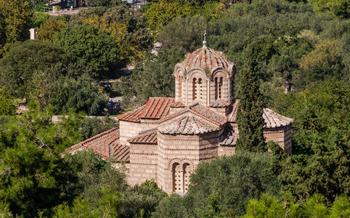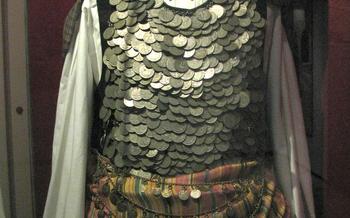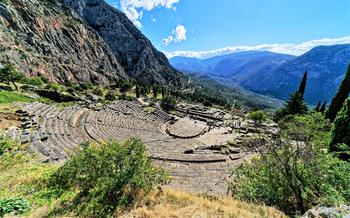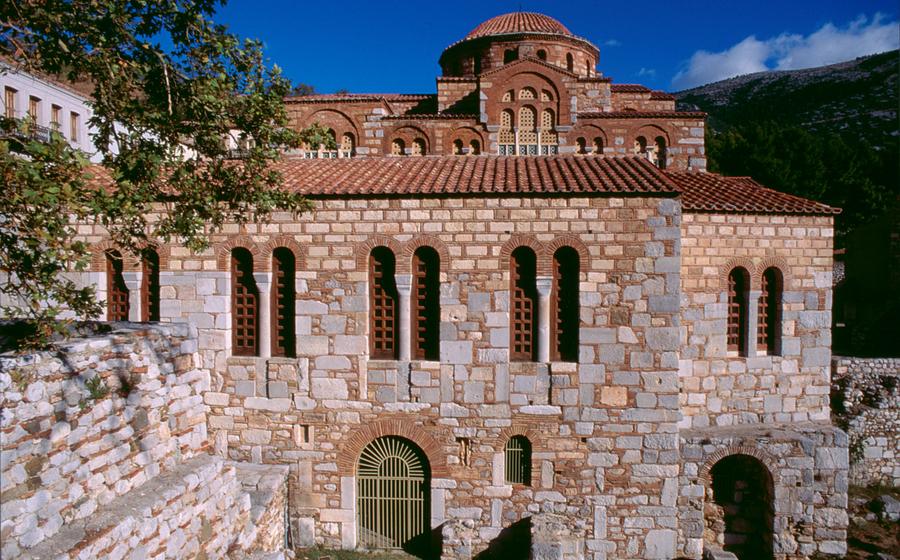
Hosios Loukas Monastery
- Historical Significance:
- Architectural Marvel
- UNESCO World Heritage Site
- Scenic Location
- Monastic Life
- Pilgrimage Site
- Guided Tours
- Opening Hours and Admission
- Dress Code and Etiquette
- Photography and Videography
- Accessibility
- Nearby Attractions
- Local Cuisine
- Insider Tip: Unveiling the Hidden Treasures of Hosios Loukas Monastery
Historical Significance:
Nestled in the foothills of Mount Helicon, Hosios Loukas Monastery stands as a testament to the rich history and religious significance of Greece. Founded in the 10th century by the hermit monk Loukas Stylites, the monastery quickly rose to prominence as a center of Byzantine Orthodoxy. During the Byzantine Empire, Hosios Loukas played a crucial role in the spread of Christianity, serving as a spiritual and intellectual hub for the region. The monastery's walls hold within them a treasure trove of architectural and artistic masterpieces, reflecting the blending of Byzantine and Greek Orthodox traditions. Intricate mosaics, frescoes, and sculptures adorn the church interiors, narrating the lives of saints and religious stories. Its well-preserved monastic buildings, including the refectory, cells, and courtyards, offer a glimpse into the daily life of the monks who have called this sacred place their home for centuries.
Architectural Marvel
The Hosios Loukas Monastery stands as a testament to the architectural prowess of the Byzantine Empire. Its design seamlessly blends Byzantine and Greek Orthodox styles, creating a harmonious and visually stunning ensemble. The church interiors are adorned with intricate mosaics, frescoes, and sculptures that depict biblical scenes and saints. These artworks are not mere decorations but serve as powerful tools for religious education and inspiration.
The monastery's architecture is characterized by its use of arches, domes, and vaults, which create a sense of grandeur and spaciousness. The central dome of the church, supported by four massive pillars, is a masterpiece of engineering and a symbol of the monastery's spiritual aspirations. The exterior of the monastery is equally impressive, with its thick stone walls, arched doorways, and decorative carvings.
In addition to the church, the monastery complex includes a refectory, cells for the monks, and courtyards. Each building serves a specific purpose in the daily life of the monastery, contributing to its overall functionality and self-sufficiency. The refectory, where the monks gather for meals, features a long central table and a vaulted ceiling. The cells, where the monks live and sleep, are simple and humble, reflecting the monastic values of austerity and humility. The courtyards, adorned with cypress trees and fragrant flowers, provide tranquil spaces for contemplation and relaxation.
UNESCO World Heritage Site
The Hosios Loukas Monastery holds a prestigious position as a UNESCO World Heritage Site, recognized for its exceptional cultural and historical significance. This designation was bestowed upon the monastery in 1990, highlighting its outstanding universal value. The criteria that make the monastery worthy of this prestigious recognition include its exceptional architecture, its well-preserved state, and its profound religious and cultural importance.
The architectural splendor of the monastery, a harmonious blend of Byzantine and Greek Orthodox styles, leaves visitors in awe. The intricate mosaics, frescoes, and sculptures adorning the church interiors are testaments to the artistic prowess of the Byzantine era. The well-preserved monastic buildings, including the refectory, cells, and courtyards, provide a glimpse into the daily life of the monks who have called this place home for centuries.
Beyond its architectural and artistic merits, the Hosios Loukas Monastery holds deep religious and cultural significance. As a prominent pilgrimage site for Orthodox Christians, the monastery has been a place of worship and spiritual contemplation for generations. The presence of relics associated with Saint Luke the Younger, the founder of the monastery, further enhances its sacred status. The monastery's ongoing role in preserving and promoting Orthodox traditions and practices further underscores its cultural importance.
Preserving and protecting the Hosios Loukas Monastery is of paramount importance. As a UNESCO World Heritage Site, the monastery receives international recognition and support for its conservation efforts. The designation ensures that the monastery's unique architectural features, its religious significance, and its historical context are safeguarded for future generations to appreciate and enjoy.
Scenic Location
Hosios Loukas Monastery is not only a spiritual sanctuary but also a place of breathtaking natural beauty. Perched atop a rocky outcrop, the monastery offers stunning views of the surrounding landscape, including the majestic Parnassus Mountains. The rugged cliffs that surround the monastery create a dramatic backdrop, while the lush greenery that carpets the slopes adds a touch of serenity.
The monastery's location is ideal for visitors seeking tranquility and spiritual reflection. The tranquil atmosphere and the breathtaking views invite visitors to slow down, connect with nature, and find inner peace. Whether you're a nature enthusiast, a spiritual seeker, or simply looking for a serene escape, Hosios Loukas Monastery is a place where you can truly immerse yourself in the beauty of the natural world.
As you stand on the monastery's terrace, gazing out at the vast expanse of mountains, valleys, and forests, you can't help but feel a sense of awe and wonder. The beauty of the surroundings is a constant reminder of the divine presence that permeates this sacred place.
Monastic Life
Delve into the sacred realm of Hosios Loukas Monastery, where a community of devoted monks has dedicated their lives to spiritual contemplation and service. Immerse yourself in their serene existence, characterized by unwavering devotion to prayer, meditation, and the pursuit of inner peace. Witness the monks' unwavering dedication to their faith as they perform daily rituals and ceremonies, honoring the centuries-old traditions of Orthodox monasticism. Engage in thought-provoking discussions with these learned individuals, gaining insights into the profound teachings and practices of their monastic order.
Pilgrimage Site
Hosios Loukas Monastery holds immense significance as a pilgrimage site for Orthodox Christians worldwide. Over the centuries, pilgrims have flocked to the monastery to seek spiritual guidance, offer prayers, and pay homage to the relics of Saint Luke the Younger. The monastery is particularly renowned for its annual celebration of Saint Luke's feast day on February 7th. During this time, thousands of pilgrims gather at the monastery to participate in religious processions, attend special services, and receive blessings from the monks. The monastery's serene atmosphere and stunning surroundings provide a perfect setting for spiritual reflection and renewal, making it a cherished destination for pilgrims seeking a deeper connection with their faith.
Guided Tours
To truly delve into the rich history and significance of Hosios Loukas Monastery, consider joining a guided tour. Knowledgeable guides, often historians or theologians, bring the monastery's stories to life, providing insights into its architecture, religious significance, and the lives of the monks who have called it home.
Guided tours typically cover the main highlights of the monastery, including the stunning mosaics, frescoes, and sculptures that adorn the church interiors. Guides will explain the symbolism and iconography behind these artworks, helping you to appreciate their artistic and religious value. They will also share anecdotes and stories about the monastery's past, bringing its history to life.
Whether you're a history buff, an art enthusiast, or simply seeking a deeper understanding of Greek Orthodox Christianity, a guided tour of Hosios Loukas Monastery is an enriching experience. Group tours are available for a budget-friendly option, while private tours offer a more personalized and in-depth exploration.
Remember to book your tour in advance, especially during the peak season, to avoid disappointment. Check the monastery's official website or contact them directly for information on tour schedules, prices, and availability.
Opening Hours and Admission
The Hosios Loukas Monastery is open to visitors daily, except on major religious holidays when it might be closed for special services and observances. The hours vary depending on the season. During the summer months (April-October), the monastery is open from 8 am to 8 pm, while in the winter months (November-March), it is open from 9 am to 5 pm. Admission to the monastery is free of charge. However, donations are welcome and appreciated as they contribute to the maintenance and preservation of this sacred site. For the most up-to-date information on opening hours and admission, it is advisable to check the monastery's official website or contact them directly via email or telephone.
Dress Code and Etiquette
As a visitor to Hosios Loukas Monastery, it is important to dress modestly and respectfully. This means avoiding revealing or overly casual clothing, such as shorts, tank tops, or flip-flops. Instead, opt for long pants or skirts that cover the knees, and shirts that cover the shoulders. It is also important to be mindful of noise levels and to avoid speaking loudly or engaging in disruptive behavior. Remember that this is a place of worship and reflection for the monks and pilgrims who reside there. By observing proper etiquette, you can help to maintain the sacred atmosphere of the monastery.
Photography and Videography
The Hosios Loukas Monastery has specific guidelines regarding photography and videography within its premises. While visitors are welcome to capture memories of their visit, it is essential to be respectful of the monastery's sacred nature and the privacy of the monks and other visitors.
Photography and videography are generally permitted in the monastery's outdoor areas, such as the courtyards and gardens. However, it is strictly prohibited inside the church and other sacred spaces without explicit permission from the monastery authorities.
When taking photographs or videos, visitors should be mindful of their surroundings and avoid disturbing the monks or other pilgrims who may be engaged in prayer or contemplation. It is also important to refrain from using flash photography or any equipment that may disrupt the peaceful atmosphere of the monastery.
By adhering to these guidelines, visitors can help preserve the sanctity of the Hosios Loukas Monastery while capturing their own personal memories of this unique and awe-inspiring site.
Accessibility
Hosios Loukas Monastery is committed to making its sacred grounds accessible to visitors of all abilities. The monastery features a number of accessibility features to ensure that everyone can fully experience its architectural wonders and spiritual atmosphere. Wheelchairs users and visitors with limited mobility can easily navigate the monastery's paths and courtyards, thanks to the well-maintained ramps and paved walkways. Additionally, the monastery provides designated parking spaces for visitors with disabilities, located conveniently close to the entrance. For those who require further assistance, the monastery staff is always willing to lend a helping hand, ensuring that everyone has a comfortable and fulfilling visit.
To make the most of your visit, it is advisable to contact the monastery in advance to inquire about any specific accessibility needs you may have. The monastery staff will be happy to provide additional information and assistance to ensure that your pilgrimage or visit is both enjoyable and spiritually enriching.
Nearby Attractions
A visit to Hosios Loukas Monastery can be easily combined with other nearby attractions, offering a rich and diverse travel experience. Situated in the heart of Greece, the monastery is surrounded by a wealth of historical, cultural, and natural wonders.
The ancient city of Delphi, a UNESCO World Heritage Site, is just a short drive away. Renowned as the center of the ancient Greek world, Delphi was home to the Oracle of Apollo and played a pivotal role in Greek mythology and religion. Visitors can explore the ruins of the ancient temples, theater, and stadium, and immerse themselves in the rich history of this sacred site.
For those seeking outdoor adventure, the Arachova ski resort is located in the picturesque Parnassus Mountains, offering breathtaking views and challenging slopes for skiers and snowboarders. The resort also features a variety of other winter activities, such as snowshoeing, cross-country skiing, and snowmobiling.
The charming village of Galaxidi, situated on the shores of the Gulf of Corinth, is another nearby attraction worth exploring. Known for its picturesque harbor, traditional architecture, and lively atmosphere, Galaxidi offers visitors a glimpse into the authentic Greek way of life. Stroll along the cobblestone streets, visit the local tavernas and shops, and soak up the relaxed atmosphere of this seaside village.
To get to these nearby attractions from Hosios Loukas Monastery, visitors can rent a car, take a taxi, or join a guided tour. Rental cars offer the flexibility to explore the region at your own pace, while taxis provide a convenient and hassle-free option. Guided tours, led by knowledgeable local experts, offer a deeper insight into the history and culture of the region.
Local Cuisine
Indulge in the flavors of traditional Greek cuisine at the tavernas and restaurants near Hosios Loukas Monastery. Savor the mouthwatering moussaka—a succulent dish of eggplant, potatoes, and minced meat topped with a creamy béchamel sauce. Delight in the aromatic souvlaki, tender skewers of grilled meat, often served with fresh vegetables and tzatziki sauce. For a seafood feast, try the grilled octopus or the saganaki, a dish of shrimp, mussels, and calamari cooked in a flavorful tomato sauce. Don't forget to accompany your meal with a glass of refreshing ouzo, a traditional Greek spirit. To fully immerse yourself in the local culinary experience, choose a taverna with a view, where you can savor the delicious food while enjoying the breathtaking scenery of the surrounding landscape.
Insider Tip: Unveiling the Hidden Treasures of Hosios Loukas Monastery
As you wander through the monastery grounds, keep an eye out for a hidden gem that often goes unnoticed by visitors. Tucked away in a secluded corner of the complex is a small chapel known as the Chapel of the Transfiguration. This intimate and atmospheric chapel is believed to date back to the 11th century, making it one of the oldest structures in the monastery. Step inside to admire the beautifully preserved frescoes that adorn the walls, depicting scenes from the life of Christ. The soft light filtering through the narrow windows creates a mystical ambiance, inviting you to pause and reflect on the rich history and spiritual significance of this sacred place.
